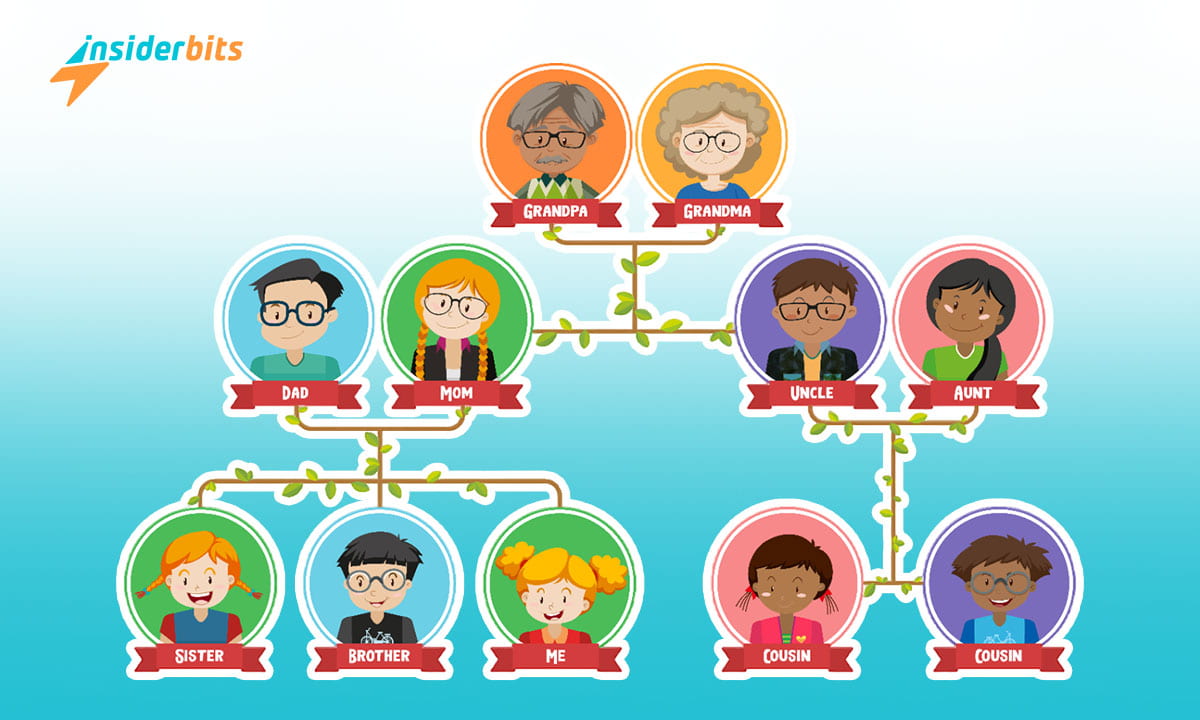By delving into your family tree and tracing your ancestry, you can gain a deeper understanding of your roots and create a rich tapestry of your familial history.
Whether you are a seasoned genealogist or a curious beginner, these apps provide a platform to document, preserve, and share your family’s legacy.
Join Insiderbits as we delve into the world of genealogy apps, unlocking the secrets of your past and embracing the diversity of your heritage.
The Best Family History Apps:
FamilySearch Family Tree
FamilySearch Family Tree is a genealogy app that offers users the opportunity to delve into their family history and create a comprehensive family tree.
The app provides access to billions of freely accessible genealogy records, allowing users to explore their lineage and connect with their ancestors. One of the key features of FamilySearch Family Tree is its collaborative nature, where users can work together to build and improve the accuracy of the family tree.
While the app has received praise for its extensive record collection and user-friendly interface, some users have raised concerns about the accuracy and reliability of the information shared on the platform.
4.6/5
Find A Grave
Find A Grave is a genealogy app that offers a unique way to explore family history through virtual cemetery visits and access to a vast database of burial information. The app allows users to search for gravesites, upload photos, and contribute valuable data to the community.
With over 100 million graves in half a million cemeteries, Find A Grave serves as a valuable resource for genealogists seeking to connect with their ancestors. Users can easily locate cemeteries, view photos of gravestones, and mark GPS locations of specific graves.
The app also facilitates photo requests, enabling users to request images of gravestones from volunteers worldwide.
MyHeritage
MyHeritage is a free genealogy app that offers users the opportunity to explore their genetic and ethnic background through at-home DNA testing.
With a focus on DNA matching and ethnicity estimates, MyHeritage DNA presents results engagingly and interactively, including animated presentations with musical accompaniment and a world map highlighting regions of genetic makeup.
Users can access tools like smart matching and record matching to connect with other members’ family trees and historical records.
4.3/5
Ancestry
Ancestry is a renowned genealogy app that offers users a comprehensive platform to explore their family history and connect with their roots.
This app provides access to a vast database of genealogical records, enabling users to build detailed family trees, discover relatives, and uncover fascinating stories from the past.
Ancestry’s DNA testing feature allows users to delve into their genetic origins and connect with potential relatives based on shared DNA matches.
4.2/5
Treeview
TreeView is a versatile genealogy app that caters to both experienced family historians and beginners, offering a range of features to facilitate family history research and organization.
The app allows users to create visually appealing family trees, charts, and reports, presenting ancestral information in various formats.
With the ability to import GEDCOM files or start a family tree from scratch, TreeView provides flexibility in documenting and preserving family history.
Users can personalize their charts with photographs and customize backgrounds, enhancing the visual presentation of their family tree. Additionally, TreeView offers features like drag-and-drop mapping, relationship calculators, and a problem-finder tool to ensure data accuracy and consistency.
What Are the Features to Look For in a Genealogy App
When looking for a family history app, consider the following key features:
Offline Capability
Ability to create and store family trees offline without the need for sync features or cloud storage, providing flexibility for users who prefer offline access.
Customization Options
Features that allow users to customize their family trees with various details like names, relationships, dates, and photos to create a personalized and detailed family history.
Record Hinting
Tools that provide automated record and tree hinting, suggesting potential matches or records that could enhance the user’s family tree research.
Multimedia Support
Capability to incorporate images, text, audio, and video files to create multimedia scrapbooks, slide shows, and printable family history books for a rich and engaging experience.
Collaboration Tools
Ability to share research with other genealogists through universal family tree file formats like GEDCOM, enabling easy data swapping and collaboration among family members and researchers.
Research Assistance
Features like date calculators, perpetual calendars, relationship calculators, and in-app searching with major genealogy websites such as FamilySearch, Ancestry.com, and MyHeritage to aid in research and data collection.
Privacy Settings
Options to control the privacy of family trees, DNA information, and other personal data, ensuring users can choose what information to share and keep private within the app.
Privacy Settings
Consider the cost of the app, including any subscription fees or one-time purchases, and look for free trial versions to test the app’s functionality before committing to a purchase.
How to Import Data From Other Genealogy Apps To a New App
To import data from other genealogy apps to a new app, follow these steps below:
- Export your family tree data from the existing genealogy app in a compatible format like GEDCOM. Most genealogy programs allow you to export your data in GEDCOM format, which is a standard file format for genealogical data exchange.
- In the new genealogy app, create a new project or family tree where you intend to import the data. Ensure that the new app supports the import of data from external sources.
- Use the import feature in the new genealogy app to bring in the exported GEDCOM file from the previous app. Follow the app-specific instructions for importing data, which may involve selecting the file and confirming the import settings.
- Once the data is imported, review the information to ensure that it is transferred correctly. Check for any discrepancies or errors that may have occurred during the import process.
- Address any duplicate entries or inconsistencies that may arise from the import. Some apps offer tools to help merge duplicate records and clean up the imported data for a more organized family tree.
By following these steps and utilizing the import functionality provided by the new genealogy app, you can seamlessly transfer your family history data from one app to another, preserving your research and lineage in the new platform.
Genealogy and Family History Apps – Conclusion
In conclusion, when selecting a genealogy app, it is essential to prioritize features that align with your research needs and preferences. Look for apps that offer offline capabilities, robust customization options, record hinting, multimedia support, collaboration tools, research assistance, privacy settings, and cost-effectiveness.
By choosing a family history app that encompasses these key features, you can embark on a rewarding journey to uncover your family history with efficiency, accuracy, and a personalized touch.
Related: Family Locator: Stay Connected with Life360
Like this article? Add the Insiderbits blog to your favorites and visit us whenever you want to learn new and exciting information about technology and much more!





